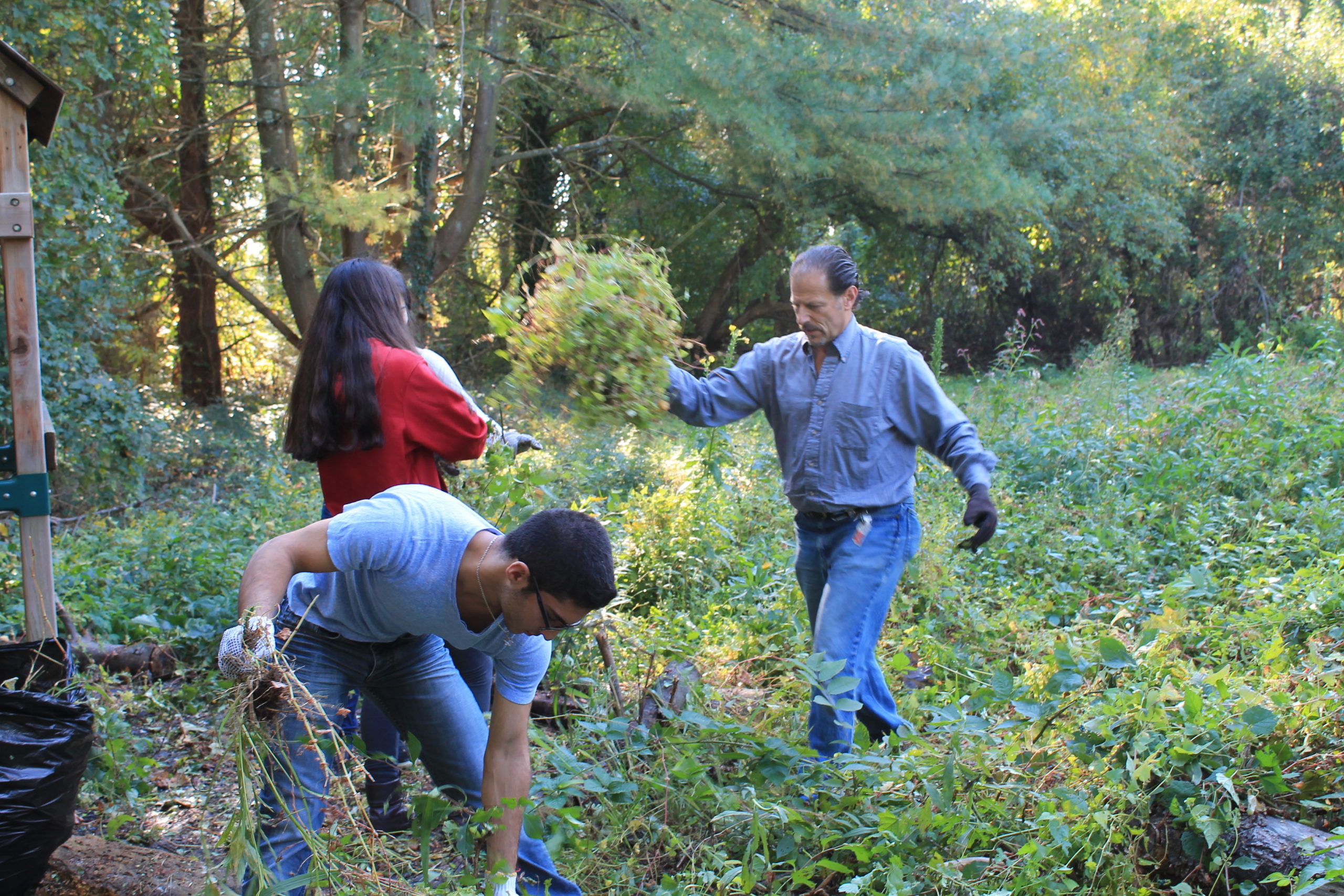Steve Finkelstein was taking his Wheatley School students for what he thought was just another walk in the woods about two decades ago when they stumbled upon a patch of the Hempstead Plain.
Eric Morgan, a botanist who at the time ran the Clark Botanic Garden in Albertson, was with Finkelstein’s environmental science class that day and found a few plants that looked like some of the plains’ native species, Finkelstein said.
It turned out that the patch of Wheatley Woods, a 15- to 20-acre wilderness behind the Old Westbury high school, was a three-acre remnant of the plains, which once covered around 40,000 acres of what is now Nassau County.
Only a couple dozen acres of the plains remain today, and Finkelstein and his students have worked to restore the piece behind Wheatley. But now he wants to enlist the community outside the school in the effort in a cleanup project on Sept. 24.
“I’m trying to teach kids about saving the environment and I said, ‘Let’s not just teach about it out of a textbook. Let’s get out there and do it,'” said Finkelstein, who has taught in the East Williston school district since 1994.
Finkelstein, his students and other volunteers will gather at the school that day to remove mile-a-minute weed, a thorny invasive plant, from the patch before it drops seeds and spreads.
The Wheatley School’s Environmental Action Club, a student group that Finkelstein advises, has worked over the years to remove invasive species to allow native plains plants, such as little bluestem, switchgrass and dogbane, to thrive, Finkelstein said.
Invasive species are among the biggest challenges to prairie restoration efforts, said Betsy Gulotta, the conservation project manager for Friends of Hempstead Plains at Nassau Community College, where she is also a biology professor.
The Hempstead Plains, one of very few east of the Allegheny River in Pennsylvania, were originally flat and essentially treeless with valleys formed by glacial streams, according to a 1911 article published in the Bulletin of the American Geographical Society. They originally stretched across what is now Nassau County from roughly Old Country Road to the Southern State Parkway, Gulotta said.
The development of Long Island from colonial times to today shrank the plains and allowed invasive species to edge out native grasses and wildflowers, Gulotta said. Nassau Community College is home to 19 acres of plains land, the biggest piece remaining today.
“It’s the only part that’s left in the county that’s really indicative of what it used to look like,” Gulotta said.
The patch of plains behind the Wheatley School is likely too small to ever bring back the birds and other animals that once inhabited them, Gulotta said, but the native plants can be successfully restored.
Finkelstein and other teachers have traveled to Curtis Prairie in Wisconsin, the world’s oldest ecologically restored prairie, to learn more about prairie restoration. He said he hopes to one day do a controlled burn behind the school, which would clear invasive plants and make way for dormant seeds in the soil to grow.
In the meantime, though, he and his students need help in keeping up the progress they’ve made. Finkelstein said he wants to make next Sunday’s cleanup the first of what will become an annual event.
“These invasive exotics have been getting a leg up on us and it’s time to call in the community,” he said.
That community involvement is important to preserving and restoring what’s left of the plains, Gulotta said.
“I think the point is that the more land that we can save and the more habitat that we can provide for the plants and animals that need it, the better,” she said.
The cleanup in the Wheatley Woods will run from 10 a.m. to 1 p.m. on Sunday, Sept. 24. Participants will meet at the Wheatley School. Gloves will be provided.



